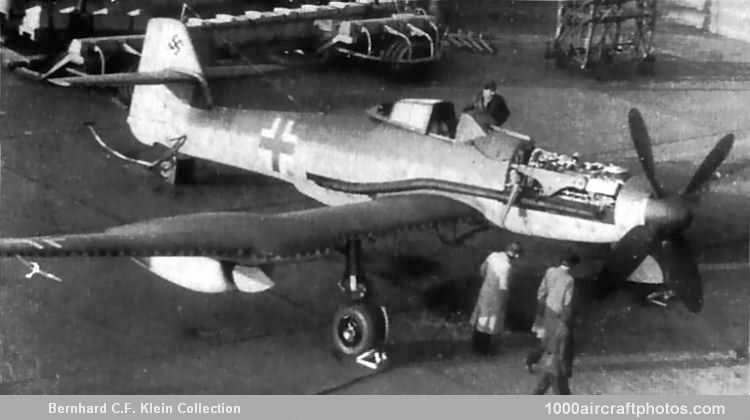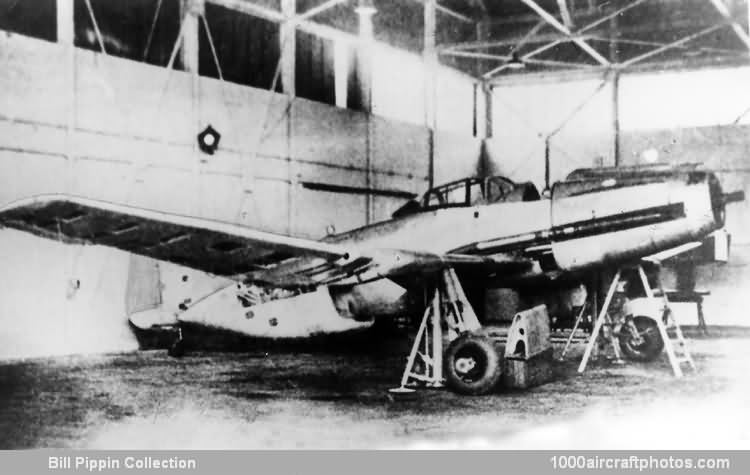05/31/2011. Remarks by Johan Visschedijk: "The most bizarre piston-engined fighter evolved by the German aircraft industry during WW II was without doubt the ungainly Blohm & Voss BV 155 high-altitude interceptor with its inordinately large wing span and unique wing-mounted radiators. The development history of this warplane was as curious as its appearance, for its development was commenced early in 1942 by the Messerschmitt A.G. as the Me 155 shipboard fighter for the carrier Graf Zeppelin. This was to have employed the fuselage of the Bf 109 G married to an entirely new wing, a wide-track landing gear and a 1,475 hp DB 605A engine.
Interest in shipboard fighters in Germany waned during the autumn of 1942 after the Graf Zeppelin carrier was cancelled, but during the following November the design was resurrected to fulfill a requirement for a high-speed single-seat bomber capable of carrying a 2,205 lb (1,000 kg) offensive load. Designated Me 155 A, the design was stripped of most of its defensive armament and all carrier equipment, internal fuel capacity was increased and a long tail wheel leg fitted to provide ground clearance for a 2,205 lb (1,000 kg) SC 1000 bomb. Again Messerschmitt failed to obtain an order for the aircraft, but the basic design was further developed as the Me 155 B-1 to meet a specification for an Extremer Höhenjäger (literally: extreme height fighter).
Prototype construction of the Me 155 B-1 was about to commence when, in August 1943, the RLM instructed Messerschmitt to transfer all drawings to Blohm & Voss. At this time the design employed port and starboard Bf 109 wings attached to a new rectangular center section,
spanning 68 ft 10.77 in (21.00 m) overall, a standard Bf 109 fuselage, tail plane and landing gear, and vertical tail surfaces similar to those of the Me 209 V5. No less than eight individual radiators were mounted underwing! The fuselage had been lengthened to provide space for a large turbo-supercharger aft of the cockpit.
Dr.Ing. Richard Vogt of Blohm & Voss considered extensive redesign essential, and although the first prototype, initially known as the Me 155 B-1 and later redesignated BV 155 A-1 or BV 155 V1, retained many Bf 109 fuselage components, an entirely new laminar-flow wing was adopted. Large coolant radiators were mounted above and at the extremities of the wing center section. The main landing gear members were adapted from those of the Ju 87 D-6, and the BV 155 V1 was flown for the first time on February 8, 1945, this test being abbreviated as a result of an alarming rise in the coolant temperature shortly after take off. Second and third flights were made on February 10 and 28 respectively, and a second prototype, the BV 155 V2, had joined the test program on February 15.
The BV 155 V2 was the result of further development work by Vogt's team and was intended as the first prototype for the BV 155 B series and, like the BV 155 V1, was powered by a DB 603A engine. The wing radiators were underslung, the wing chord was increased and a redesigned, all-round-vision cockpit canopy was fitted.

